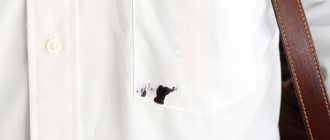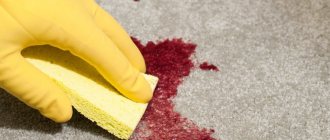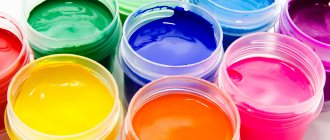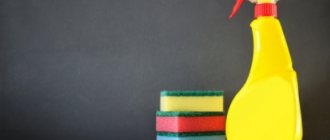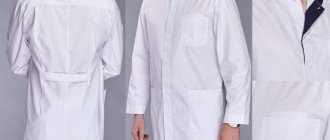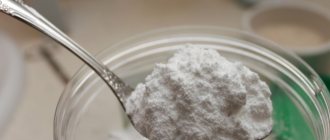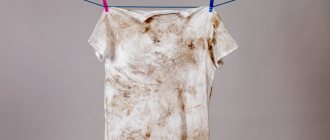The clothes you wear show how neat and tidy you are. Such qualities are especially important for employees in the medical field, and it is more important for them than anyone else to have a clean uniform.
A medical gown is susceptible to stains of various types, and given the fact that during work, sometimes there is no time to change clothes, the stains can become particularly stubborn. Manufacturers of medical clothing took into account the extreme conditions of its use when choosing the material from which it was made.
Many methods designed to remove stains will help you bleach a medical gown. This fabric can withstand machine cleaning, exposure to bleaches and even boiling.
Proper washing is the key to softness and fluffiness
With the advent of washing machines and universal powders into our lives, the rules of washing are forgotten. It is worth remembering them and putting them into practice.
- Towels must be washed separately from other items. Terry items, due to their structure, easily absorb dye or dirt from other products. After such washing they lose color and become faded. And if the item was white or pastel in color, it may turn an unpleasant gray color.
- Do not put dark towels in the machine together with light ones.
- If you can load 5-7 kg of clothes into the machine, you shouldn’t do this when washing towels. It is enough to put 3-4 large baths or 6-7 small ones. Washing requires a large volume of water. If you load the machine to the maximum, you will not get a wash, but the opposite effect. The towels will not wash, but will spin in dirty water.
- You need to wash it once a week or more often. The principle is this: the more often towels are used, the more often they need to be changed.
- If there is sufficiently strong contamination, the product should be soaked for several hours before washing.
- When washed with powder, the softness of terry products is lost and they become prickly. To avoid this, it is better to use washing gel instead of powder. The dose of detergent is two times less than usual. A large amount of powder or gel is difficult to wash out of terry fabric.
- Do not use products containing chlorine. Chlorine destroys the fabric structure and towels will quickly tear.
- If the water used is hard, it must be softened. To do this, special tablets or capsules are added to the washing machine. Table vinegar softens water well.
- The washing temperature for terry products should be no more than 60°. If the towels are colored, then 40°. This temperature will prevent them from shedding.
- Using tennis balls or special balls for down jackets, you can maintain the fluffiness of terry fabric.
- You need a lot of water to rinse. It is advisable to turn on the extra rinse function when washing, or rinse the laundry twice.
- It is advisable to add conditioner to the rinse water. It gives a pleasant aroma and silky softness to things.
- Minimum spin is recommended, no more than 700 rpm.
- Do not leave towels in the washing machine drum for a long time. It is better to take them out immediately, shake them well and hang them flat to dry. If laundry stays wet for a long time, it begins to smell unpleasant.
- Do not dry terry products on a radiator or in the sun. If you do this, rigidity is guaranteed.
- Terry towels do not need to be ironed. They are carefully folded, straightening the folds with your hands. The iron causes the loops to fit tightly to the base of the fabric and the fluffiness is lost.
Ways to increase the lifespan of things
The potato product will preserve the integrity of the fabric structure of the product.
It is easy to bleach a white coat at home, but you need to choose the right products. The use of folk recipes makes it possible to quickly remove stains and return the product to its original appearance. In addition, using household items for washing saves your budget. To make a thing tough and retain its appearance longer, it needs to be starched. The best method is to use starch. The substance is diluted in heated water, the robe is lowered for 20 minutes.
An employee of a medical institution is obliged to monitor the condition of his gown. The absence of dirt, wrinkles and grayness on work clothes characterizes the cleanliness of a doctor in a medical institution and wins over patients.
The uniforms of hospital and clinic employees quickly become dirty, especially when interacting with medications. Frequent washing leads to the fact that workwear acquires a shade of gray or yellow. Using industrial or improvised means, you can easily bleach a white coat at home. It is advisable to use professional substances for machine cleaning with pre-treatment and soaking of medical clothing.
Popular and effective products that can bleach fabric must be used with caution in accordance with the instructions.
Before use, you should find out which powder or gel is suitable for this type of material.
You can bleach a dirty medical gown by hand if there is no heavy soiling, especially on delicate fabrics. Boiling is permissible only for dense material that does not contain wool.
Hardware stores provide a huge selection of household chemicals that help in cleaning bathrobes made from various types of fabrics. Professional products that can whiten an element of a medical uniform are suitable for hand or machine washing. For the first option, you must first soak the medical gown in water with the addition of powder. For the second option, you can use the soaking mode in the washing machine itself.
You need to bleach a medical item carefully so as not to damage it with industrial chemicals. The composition should be selected for a specific type of material. A synthetic robe can be damaged if you use a white color suitable for cotton clothing.
If the product is not selected correctly, a white medical suit may become stained, while a colored one may fade. Vanish can be used for delicate fabrics and as a stain remover. The material can be bleached using a chlorine-containing substance.
A universal remedy that can whiten a yellowed robe is a washing capsule. The gel in the form of a tablet carefully removes greasy marks, grayness, yellowness and green stains without damaging the fabric and texture of clothing.
Recipes with peroxide
The method of using ammonia and peroxide to whiten a suit consists of six tablespoons of alcohol and 4 teaspoons of hydrogen peroxide, which are combined with 10 liters of water. To remove stains and return the medical uniform to its original color, you need to place the gown in the solution for several hours. In case of heavy contamination, it is permissible to add 1 tbsp to the recipe. l. turpentine. After soaking, it is recommended to wash the item in a machine.
To achieve a snow-white uniform color, you can soak the robe in a ten-liter bucket of water with the addition of 4 tbsp. l. peroxide, 1 tbsp. l. ammonia, 6 tbsp. l. salt and 55 g of regular washing powder. Medical clothing should be left in water for half an hour, then rinsed and machine washed.
Acids
You can bleach a robe with surface contamination using citric and boric acid. The method is less aggressive compared to chemical bleaches.
A recipe using fresh lemon involves dissolving the juice of 2 lemons in a bowl of warm water. To better penetrate the acid into the fibers, medical clothing should be soaked for at least 9 hours, after which the uniform should be rinsed and machine washed as usual.
Citric acid will help whiten a robe if you soak it in 60 grams of raw material with 3 liters of hot water. Clothes are soaked for 3 hours, after which they are rinsed and washed as usual.
Boric acid should be used to clean medical products made from cotton. The recipe is to combine 2 liters of water and 2 tablespoons of boric acid. You can whiten a robe by soaking the item for 2-3 hours and then washing it.
Soda and vinegar
The baking soda and bite method is effective and cheap. You can bleach an element of a medical uniform in a washing machine by adding 2-3 tablespoons of soda to the powder. No boiling is required, just set the temperature to 75 degrees.
To whiten a yellowed medical gown by hand washing, dissolve 6 tablespoons of powder in hot water with the addition of 1 tablespoon of ammonia and a couple of aspirin tablets. After 2 hours of soaking, the item should be washed with powder.
We suggest you read: How to bleach white things by boiling
Using simple vinegar, you can easily whiten a medical uniform. It is acceptable to use essence and ordinary vinegar to remove yellowness. The recipe is to dissolve 280 ml of the substance in 6 liters of water. Duration of soaking is up to 50 minutes. After thorough rinsing, the robe can be washed by hand or in a washing machine.
Vinegar essence will require much less - 80 ml. The concentrate should be mixed with 7 liters of warm water and left to soak for 40–50 minutes. You can finally bleach the item using any preferred washing method.
Mustard
It is advisable to use mustard for a cotton medical gown. Powdered seasoning should be dissolved in 5 liters of water, the temperature of which is 80 degrees. You can whiten the mold by soaking it for 3 hours.
Laundry soap
You can use laundry soap for medical suit material that does not contain synthetics. The product can be treated with individual stains or applied to the entire robe using a rubbing motion to whiten the yellowness. The product should be left for 8–9 hours. When the soaking step is completed, the uniform is washed using fabric softener.
You can restore the freshness of a medical gown yourself, without turning to dry cleaning for help. Work clothes have to be washed frequently, so it is not practical to buy expensive bleaching products. It is better to use available products: citric acid, soap, vinegar, potassium permanganate and much more.
Laundry soap
Laundry soap is excellent at removing stains from cotton fabric, but it is not suitable for old stains or synthetics. Rub the product well onto the dirty areas and soak in soapy water overnight. In the morning, rinse with fabric softener to make the robe soft.
Lemon acid
A powerful product for removing various stains, it has a milder effect compared to commercial bleach. A sachet of product (50 g) is diluted in 3 liters of hot water and the robe is immersed in the solution. After about 3-4 hours, you need to wash the product by hand, adding powder or using a machine. Note! This recipe is only suitable for white fabrics; white streaks may appear on pink or blue fabrics.
Lemon juice
It is better to remove fresh stains with natural juice. First, you will have to squeeze the juice from 2-3 lemons and add it to 10 liters of water. Soak the white coat in the resulting solution for 24 hours. Can be used for different types of fabric.
Baking soda
Washing soda is used quite often. It can be applied locally or the entire product can be soaked in the solution. For the last method, dilute 6 tablespoons in 5 liters of hot water and add 2 tablespoons of ammonia. Medical clothing is left in the liquid for at least 2 hours. Then they are washed by hand or put into a washing machine with powder.
Mustard
The method bleaches cotton robes that have lost their whiteness due to long wear. Dry mustard is dissolved in 5 liters of hot water. The soiled item should be immersed in the mixture and left for several hours, depending on the contamination. To prevent yellowness, 1.5-2 hours is enough, and to return whiteness to the yellow form - about 4 hours.
Before bleaching a medical white coat, you need to select the correct concentration of the solution. Only an essence with a concentration of more than 60% is suitable. Dilute 100 ml of vinegar in 8 liters of warm water and soak clothes in the resulting liquid. After 45-60 minutes, you should take out the mold (it is strongly recommended to use gloves to wring out the product), rinse in running water and wash in a washing machine. It will be better if you select the “Heavily soiled” option and set the “Rinse” mode several times.
Manganese
To the surprise of many, rose water from potassium permanganate can whiten a medical gown that has turned yellow or gray over time. There are 2 ways:
- Grate laundry soap on a medium grater and dissolve it in warm water (usually use 9-10 liters). Manganese granules should be diluted separately until a rich reddish hue is obtained. Mix the liquids together, soak the laundry in the solution and close the lid. Leave for 6 hours, then wash thoroughly.
- Dissolve a few tablespoons of washing powder in water to form a strong soap solution. Also dilute potassium permanganate separately and pour it into water with powder. Leave the terry or cotton product in this liquid for several hours.
In the first case, you need to re-wash the uniform with powder. In the second case, it will be enough to rinse the product under clean water; detergent is no longer required.
Ammonia
An effective product that is sold in any pharmacy at an affordable price. A medium basin of water will require only 5 tablespoons of ammonia. A white coat is dipped into this solution and left for 2.5-3 hours. After the specified time, the uniform is washed by hand with laundry soap or bleaching powder.
We suggest you read How to remove a stain from a white coat
Vodka with glycerin
Is there a chance for a new life?
Washed towels look unpleasant. It looks like they haven't been washed for a long time. This can be fixed, but it will require additional funds. You can use bleach and rinse aids, or you can use home remedies. Every housewife has salt, soda, mustard and vinegar, laundry soap and vegetable oil in her home.
Soaking is an effective method.
It is best to soak overnight, but there are several options for soaking:
- about 500 grams of soda ash is diluted in 5 liters of water. Towels are soaked in this solution for 24 hours.
- 2 tablespoons of dry powdered mustard are diluted in 1 liter of water. The solution is added to a bucket of water and the towels are left to sit for 12 hours.
- 5 tablespoons of salt are dissolved in 5 liters of cold water. Soak the laundry overnight.
- You will need a little less than half a cup of baking soda. Dilute in a bowl of water and soak for several hours.
- The laundry soap is grated, 5 tablets of hydrogen peroxide and 1 tablespoon of ammonia are added. When using ammonia, you need to be careful - it is an alkali that can cause burns.
- Add a tablespoon of vegetable oil, 2 tablespoons of bleach, and 0.5 cups of powder to a bucket of water. For soaking in this solution, 3 hours is enough.
After this procedure, it is necessary to thoroughly rinse the terry products in a large volume of water.
When washing towels that have lost their appearance, you should add baking soda to the powder. It not only softens terry, but also disinfects and removes unpleasant odors.
It is not advisable to boil terry clothes. But if the towels are white, and there is no other way to return them to whiteness, then this method can be used.
For boiling, bleach is added to a bucket of water in addition to the powder. Only bleach is suitable that does not lose its properties when boiled. You should carefully read the instructions for the bleach. Boiling time usually takes 50-60 minutes.
Instead of powder, you can add grated laundry soap and 1 tablespoon of silicate glue to a bucket of water. Boil for half an hour is enough.
- To make it softer, it is recommended to add a handful of baking soda to the rinse water.
- To add whiteness, it’s worth remembering “grandmother’s” method: drop a little blue into the last rinse water. Instead of blue, you can add purple ink. It is important that the water is slightly blue.
Steaming. A vertical steamer will help lift the terry and restore fluffiness. After this procedure, you should let the towel dry flat.
Method No. 1. Ammonia and hydrogen peroxide
The simplest and most effective method known to any medical student.
In order to bleach a robe, you only need two ingredients: ammonia and hydrogen peroxide. You can purchase these ingredients at any pharmacy or specialty medical equipment store. To whiten, the robe is placed in water with the addition of 6 tablespoons of ammonia and 5 teaspoons of hydrogen peroxide (per 10 liters of water). The holding time should not be more than 2 hours. Hydrogen peroxide in this combination allows you to evenly whiten medical clothing, and ammonia prevents the appearance of yellow spots on the fabric. Also, ammonia slightly softens tap water, which greatly facilitates the process of bleaching things.
Another effective scheme that allows you to bleach a medical gown at home. This method is suitable for bleaching clothes containing synthetic fabric. The main thing is not to overdo it, otherwise the white coat may be seriously damaged by interaction with chemically active substances.
To prepare the bleach solution you will need:
- 10 liters of warm water (not higher than 40 °C);
- hydrogen peroxide 3% (3-4 tablespoons);
- ammonia (1 tbsp);
- table salt (6 tablespoons);
- washing powder (50 g).
Medical clothing is immersed in the solution for 20-30 minutes, after which it is thoroughly rinsed in cold water. For heavily soiled items, you can additionally wash the items after soaking.
Tips for removing stains
Fresh stains can be washed off easily, but old ones will require some tinkering.
- a fresh greasy stain can be easily removed by any dishwashing detergent. Apply this product thickly to the area of contamination and leave for 3-4 hours. Then wash as usual and rinse.
- Laundry soap is suitable for removing old grease stains. The dirty place is lathered thickly. The towel is rolled up so that the stain is inside. You can put it in a bag. Leave it for a day.
- If mold appears on the towel under prolonged exposure to moisture, 9% vinegar will help remove it. Dilute 2 tablespoons of vinegar in three liters of water. Soak the product for 10-15 minutes.
When removing heavily soiled areas, cleansers should be applied only to the stain.
It happens that it is not possible to put the towel in order in one go. The update procedure can be repeated 1-2 times.
If the result is not satisfactory, then most likely the product has expired. It is worth updating the towels and washing them according to the above rules.
Source of the article: https://domopravitelnitsa.com/stirka/kak-vernut-byiluyu-krasotu-mahrovyim-polotentsam.html
How to wash a terry robe |, How to wash a terry robe that is very dirty.
Terry bleaching products
Today, the chemical industry offers various powders and stain removers, especially for white items. But if you trust the experience of our grandmothers, then it is quite possible to deal with stains and return things to their whiteness without expensive products. There is a stain remover for each type of stain.
You can get rid of greasy stains with regular dishwashing detergent. And also soda, laundry soap, ammonia, salt, starch and hydrogen peroxide.
Juice stains, which are often left by children, are very corrosive. And for mothers this is real torture. They can be removed using boiling water, laundry soap or a mixture of vodka and glycerin in a 1:1 ratio.
Tea and coffee stains are common on women's dressing gowns. You can remove them with regular salt or laundry soap. The stain should be washed immediately after it appears, before it penetrates deeply into the fibers.
Fasteners and metal buttons begin to leave traces of rust over time. You can get rid of them using citric or acetic acid. To prevent them from appearing in the future, it is better to replace the fasteners with plastic ones.
General recommendations
A terry robe is considered a personal item, so its cleanliness and softness should please its owners from the moment of purchase. In order for a product you like to retain its softness and excellent appearance for a long time, you need to know the intricacies of caring for it. The following recommendations will help you always keep your white or colored robe in excellent condition:
- Terry products of this type are considered personal items, which is why the first wash of the robes should take place immediately after purchase and delivery home.
- At what temperature should I wash a terry robe, because low thermometer readings can ruin the product? The maximum permissible water temperature is 90 degrees; it will remove dirt and fluff and straighten the fibers.
- Special products are used for cotton or bamboo fiber, from which the product is made.
- Machine washing is allowed, the main condition for this will be to load only terry products or even just a robe into the drum.
- You cannot wash a wardrobe item together with clothes with buttons, rivets, or snakes. Terry loops easily cling to such accessories, deforming the product.
- It is better to remove the spin cycle in the washing machine completely or set it to minimum, this will help protect the robe from deformation and stretch marks.
- On how to wash terry clothes, you can soak them in cool salt water. This is followed by rinsing and the main wash using detergent. The salty solution will help the product become softer, fluffier, and straighten its fibers.
- The use of stain removers and bleaches is not advisable; the substances will remove dirt, and with it the delicate structure of the fabric.
For cleaning, liquid detergents are chosen; powdered ones may not be washed out of the fibers and loops and cause allergic reactions.
Advice! Before washing terry items, you need to study the label. The manufacturer will indicate with icons the temperature conditions, washing agents and methods.
How to keep a medical gown white for a long time?
It is a well-known fact: frequent washing of clothes using various aggressive substances has a bad effect on the condition of the fabric. In order not to constantly bleach your robe, you should follow some simple rules for caring for light-colored items.
- A white robe should always be washed separately or with other white items.
- If it is necessary to wash a large amount of medical clothing at the same time, it should be divided by type of fabric (cotton, linen, synthetics).
- Chlorine-containing bleaches can only be used for washing cotton or linen items.
- Medical gowns should be washed at least once a week.
- When rinsing, it is a good idea to add conditioner to soften the water.
- If you use a washing machine, you need to clean its drain regularly. Otherwise, the drain will become clogged and things will remain dirty even after a thorough wash.
By following these simple recommendations, you can achieve impeccable whiteness in medical clothing in any situation.
Vodka with glycerin
Linen and cotton will be restored to their original appearance by a mixture of hydrogen peroxide, washing powder and boric alcohol. Suitable not only for medical gowns, but even for children's clothes and curtains. Pour 2 tablespoons of peroxide and 1 spoon of alcohol into 5 liters of water, add a few tablespoons of washing powder. The solution is heated on the stove, but not boiled. Leave light-colored items in the liquid for half an hour, after which all that remains is to rinse them in clean water.
How to wash a terry robe in a washing machine
Having studied all the recommendations from the manufacturer and prepared the product for cleaning, you can begin washing. The procedure is carried out as follows:
- First of all, set the washing mode; it will depend on the material from which the robe is made. The most common is cotton, which means choosing to wash cotton.
- A special softening agent for terry is poured into the powder compartment.
- The spin is set to the very minimum or removed altogether. It is better to remove the water with your hands at the end of the procedure.
- Choose a double rinse, so the product will be washed out of the item of clothing.
Upon completion of washing, the robe is shaken and hung to dry in the fresh air, but exposure to direct sunlight is not advisable.
Important! Using this technology, you can wash the medical gown in the washing machine.
We found out how to wash a robe in a washing machine; there are no difficulties in carrying out the procedure. The main thing is not to overdry the product, otherwise the fibers will become stiff.
Products made from bamboo fiber are machine washed a little differently; pre-soaking is not necessary. Use liquid detergent; you can use conditioner or softener. But the thermometer readings will have to be adjusted. At what temperature should I wash a robe made from such threads so as not to ruin it? Water is heated to no more than 40 degrees; higher temperatures will damage the product irrevocably.
Hand washing terry products
More gentle cleaning is done manually; a special feature of the procedure is the use of a large amount of water. This is explained by the good absorbent characteristics of the material.
It is better to carry out the procedure in the bathroom; it is in such a container that you can completely straighten the product and provide the required amount of water for washing. The process goes like this:
- A sufficient amount of water at the required temperature is collected in the container. For cotton products it can be hot; bamboo fiber needs moderate temperature water.
- A sufficient amount of detergent and softener is diluted in water for washing.
- Place the product, soak it well and leave for a while.
- Washing is carried out quickly, trying not to rub or wrinkle the product too much.
- Rinse under running water, thoroughly rinsing the product used.
- The water is squeezed out without twisting or twisting.
The product must be dried in the same way as after machine washing, in the fresh air, flattened.
Advice! After drying, under no circumstances should you iron the terry product; the high temperature of the iron will permanently ruin the robe. The terry loops will fall down and never straighten out again.
How and how to bleach white clothes at home inexpensively and quickly
Snow-white things look impressive, be it clothes or home textiles. However, this color is very easily soiled. Yes, and time is not doing it any favors: a yellow or gray tint appears. The household chemicals market offers many professional bleaches. But it is not at all necessary to buy expensive options, since it is possible to bleach white things at home using improvised means.
In order for clothes and textiles to serve for a long time and delight you with crystal whiteness, when choosing a bleaching method, you should pay attention to the type of fabric, its density, and the degree of contamination. In addition, it is necessary to carry out a trial procedure on a small area of the fabric to prevent its damage.
Useful tips
To preserve the softness and color of products of this type longer, you need to know some tricks.
- To preserve color, add table vinegar to the rinse water.
- Soaking in a salty solution will help preserve the color and help the terry loops on the products straighten out better.
- Spinning terry products in a washing machine is unacceptable; it is better to remove the water by hand.
- You should not bend or throw the product over clotheslines; the resulting creases will be very difficult to straighten.
- Washing bamboo fibers in a machine should only be done on a delicate cycle.
Using them, you will enjoy your favorite wardrobe item for a long time.
So, as you can wash a medical gown using the proposed methods, we can say that the schemes are universal. The main thing is to know the intricacies of the process.
Source of the article: https://pravilauborki.ru/hlopoty/stirka/kak-otstirat-khalat.html
How to wash a terry robe in a washing machine or by hand, How to wash a very dirty terry robe.
Bleaches
When using special products to restore the whiteness of woolen products, you must strictly follow the instructions and do not exceed the dose and processing time.
For pure white items, chlorine-containing products are most suitable. Chlorine will not only whiten and refresh the item, but also disinfect it. When using such bleaches, you must act very carefully, since they are quite aggressive. You should not use them frequently, as this can damage the fibers and premature wear of the material.
After the wool has been treated with bleach, the item must be rinsed thoroughly. To remove all chemical particles, rinsing should be repeated two or three times.
It is better to clean white items with colored inserts using oxygen-containing products. They also provide an excellent whitening effect without harming the fabric. During treatment with such bleaches, the design and color of the insert do not deteriorate. The disadvantage of this choice is the duration of the process, it takes from several hours to days.
Features of care
A terry robe is classified as home clothing for personal use, so the first wash is recommended immediately after purchase. In addition, the villi will straighten out and become fluffier. In the future, the following recommendations will be useful for caring for your robe so that it remains soft as long as possible:
- You can use laundry soap, shampoo or dishwashing detergent as homemade stain removers. Apply one of them to the contaminated area, leave for several minutes, and in this form send the product to the wash.
- If possible, do not neglect to pre-soak the robe in warm water with the addition of a small amount of salt. This will help maintain its color and softness, otherwise the fibers will become stiff like bristles.
- If there is a puff in the clothing, it can be easily removed with scissors. The fabric will not be harmed by this.
- You cannot iron terry products - this will cause them to stop being soft.
How to starch correctly
Most medical staff not only bleach their gowns, making them immaculately clean, but also starch them, which gives the clothes an even more aesthetic appearance. This is done not only for aesthetic reasons, but also as a way to extend the service life of the robe for a longer period. The fact is that a previously starched item is easier to wash later. Sometimes a simple soaking is enough for the dirt and starch to completely dissolve in the water.
Initially, starch is dissolved in a small amount of water, achieving the consistency of liquid sour cream, and the required amount of boiling water is added there, not forgetting to stir evenly. The prepared item is placed in a bowl in the prepared solution, allowing the robe to soak well and, after wrung out, hang it out to dry.
Machine washable
Your favorite clothes will retain their original appearance if you follow some restrictions when loading them into the washing machine:
- A robe made of terry cloth is quite bulky, and after getting wet it will also become heavy, so it should be placed in the drum alone.
- What to do if the robe is shortened or for children, and does not take up much space in the washing machine, or if it is not possible to wash it separately from all other things? In this case, you need to make sure that the latter are not colored or have buttons or zippers. Such elements can damage soft tissue (eyelets). After this, the terry will no longer be able to return to its original appearance.
- Choose the right detergent. Liquid powders intended for delicate fabrics are best; special softeners will not harm.
- Set the mode on the washing machine for cotton products, set the temperature according to the manufacturer’s information on the label. As a rule, it ranges from 40-90°.
- Spin only at minimum speed (no more than 800) or manually.
If you used powder in granules, then it is worth adding an additional rinse to completely rinse the product out of the terry.
Why does white turn gray when washed in a machine?
First, you should figure out why, after washing, white linen becomes gray, that is, dirty, instead of being cleaned and brightened?
First, you should exclude gross violations of the washing rules: do not wash light-colored underwear with dark clothes, do not simultaneously wash smooth fabrics with those that can leave lint (such as angora knitwear), shake out sand, dust, crumbs and other loose particles from contaminated items, and etc.
But now you load, for example, snow-white bedding into the drum, and take it out “washed.” Why?
It's all about the temperature difference between washing and rinsing.
Washing is done in hot water - thanks to this, fat-containing microparticles of dirt “stick off” from the fabric and remain in the water. At this stage, your items are white and clean. But then the rinse cycle begins - standard rinsing modes usually require cold water to be poured into the drum. Meanwhile, dirt flakes do not completely drain off with the “washing” water - they stick to the walls of the drum and to the same things, because cold water stops the flotation process of hydrophobic particles. This is the same effect that prevents you from washing greasy dishes in cold water.
As a result, dirt, which was locally on the items before washing, settles on their entire surface, also penetrating quite deeply into the structure of the fabric fibers. Added to this may be dirt from previous washes remaining inside the washer.
When checking the laundry after washing, we notice that it has changed color and looks stale
Wash by hand
Terry products absorb moisture very strongly, so you should wash your robe in the bathroom with plenty of water. It can be pre-soaked briefly with the addition of emollients and gel. Under no circumstances should you use boiling water, which is harmful to fluffy fibers. At the same time, the water temperature should not be cold, otherwise the product will not stretch.
When washing, you do not need to intensively rub the terry cloth, but rather go over the entire product with kneading movements. The final stage is rinsing with plenty of water.
When hand-squeezing, do not twist the robe, but lay it out on a wooden grate in the bathroom and slowly “drive off” the water or leave it like that for a while, letting it drain on its own. Afterwards, just shake the product and hang it to dry.
Features of washing things made of bamboo fiber
Terry robes tolerate machine washing well, but if they are made of bamboo fiber, you should give preference to hand washing. Because bamboo fabric is very delicate, silky and easy to damage.
The water temperature should not exceed 40 degrees. At higher temperatures the product may shrink significantly. It is also not recommended to add bleaching or softening agents to the water. A regular powder for delicate fabrics will suffice.
If preference is given to the washing machine, then the “delicate” mode is set. And it is advisable to turn off the spin altogether by squeezing the bamboo robe manually.
Method No. 5. "White"
This method of whitening white things is known to every housewife. The famous “Whiteness” and its analogues can only be used for cotton products. For medical clothing made of synthetic fabric, other bleaching methods should be chosen.
The scheme for using “Whiteness” is quite simple. A robe pre-soaked in hot water is poured with a small amount of bleach for two to three minutes. After the specified time, the clothes should be taken out and rinsed thoroughly. Bleach consumption rates can be read on the product packaging. Do not exceed the amount of “Whiteness”, otherwise the washed items may quickly become unusable.

